20 genius inventions that were ridiculed, now everyday products
Game-changing innovations that were savagely mocked
![<p>Rico Shen/Wikimedia Commons [CC BY-SA 3.0 DEED]</p>](https://s.yimg.com/ny/api/res/1.2/nRri1h09a0soUuzZbPLptw--/YXBwaWQ9aGlnaGxhbmRlcjt3PTk2MDtoPTYxOQ--/https://media.zenfs.com/en/lovemoney_uk_264/2c33033dd39979633d6fcfd230f1397a)
Rico Shen/Wikimedia Commons [CC BY-SA 3.0 DEED]
It's hard to believe today, but many of humanity's most important inventions were ridiculed when they were first introduced, dismissed as ludicrous fads that would never catch on.
From the humble fork to the world-conquering mobile phone, read on to discover 20 ingenious innovations that ultimately proved the naysayers very wrong.
Fork
![<p>Metropolitan Museum of Art/Wikimedia Commons [Public domain]</p>](https://s.yimg.com/ny/api/res/1.2/DgZb4470fbcygWy7tFZPvQ--/YXBwaWQ9aGlnaGxhbmRlcjt3PTk2MDtoPTYxOQ--/https://media.zenfs.com/en/lovemoney_uk_264/6620ca7c7b42b2e5cdf242a06fbc30c8)
Metropolitan Museum of Art/Wikimedia Commons [Public domain]
Exactly when the fork was invented is open to question, but this essential piece of cutlery is thought to have been introduced to the Western world in the 10th century by Byzantine princess, Theophano Skleraina, the wife of Holy Roman Emperor Otto II.
However, some historians credit its arrival in Europe to another Byzantine princess, Maria Argyropoulaina, who married the Doge of Venice's son in 1004.
Fork

Simca/Shutterstock
Both princesses were roundly ridiculed for their use of the curious pronged implement, and the fork only made inroads in the 16th century when it became fashionable in Venice before spreading throughout Italy.
Still, the cutlery piece continued to be sneered at elsewhere in Europe and wasn't widely adopted on the continent until the late 18th century.
Printing press
![<p>Internet Archive Book Images/Wikimedia Commons [Public domain]</p>](https://s.yimg.com/ny/api/res/1.2/eU5ZsSQnXj49XInMa6Xuvw--/YXBwaWQ9aGlnaGxhbmRlcjt3PTk2MDtoPTYxOQ--/https://media.zenfs.com/en/lovemoney_uk_264/e07a978060f712e2c6712fbebbcb2a3e)
Internet Archive Book Images/Wikimedia Commons [Public domain]
Though woodblock printing emerged in China during the 7th century, the first bona fide printing press was invented around 1440 in Mainz, Germany by Johannes Gutenberg, changing humanity forever and ushering in the modern era.
But like many revolutionary inventions, the contraption had plenty of critics.
Printing press

PRISMA ARCHIVO/Alamy Stock Photo
Bizarrely, German Benedictine abbot Johannes Trithemius thought that printed materials wouldn't last and believed writings inscribed on parchment were better suited to withstand the test of time.
Other critics complained that printed books would lead to everything from information overload to political chaos and would put Europe's monks out of work, harming their spiritual development.
Umbrella
![<p>Arthur Devis/Wikimedia Commons [Public domain]</p>](https://s.yimg.com/ny/api/res/1.2/5CxVJmhibI8qZ_r1bg_pvA--/YXBwaWQ9aGlnaGxhbmRlcjt3PTk2MDtoPTYxOQ--/https://media.zenfs.com/en/lovemoney_uk_264/470214765faf859bb4047df3569a2154)
Arthur Devis/Wikimedia Commons [Public domain]
Today, the umbrella is an essential accessory in many countries. In fact, the average person in England owns at least two. However, Jonas Hanway shocked fellow Londoners in the 1750s when he took to using an umbrella in the city's streets.
The first man in the nation to do so, he was bombarded with insults, pelted with rubbish, and almost run over and killed by a coach.
Umbrella
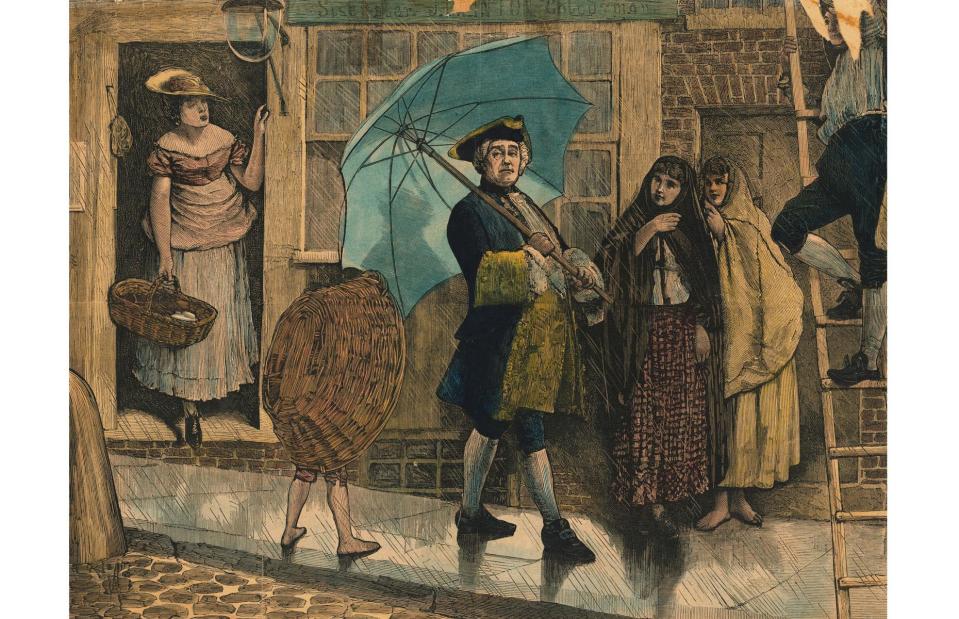
Bettmann/Getty Images
An import from Persia via France, the accessory was considered taboo for men to carry and thought of as a sign of a weak, effeminate character. Hanway also drew the ire of horse-drawn coach drivers who feared it would steal away their business, which flourished on wet days.
Stubbornly, Hanway ignored his detractors, even after one coach driver went so as far as trying to run him over. Within decades, the stigma attached to umbrellas vanished and they had become a common sight across England.
Canned food
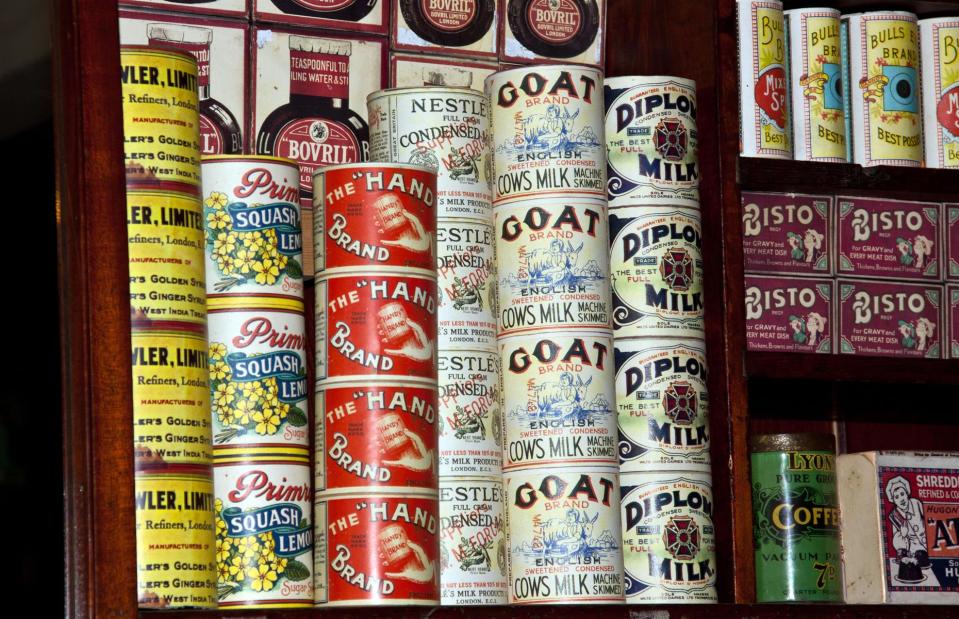
Anthony Morgan/Alamy Stock Photo
During the French Revolutionary Wars, the issue of food preservation became increasingly pressing. In 1795, the French government under Napoleon Bonaparte decided it needed a solution – and offered a prize of 12,000 francs to anyone who could find one.
A confectioner named Nicolas Appert proposed storing food in Champagne bottles, corking it and sealing it with wax, before boiling the bottles to sterilise the contents.
Canned food

Les Gibbon/Alamy Stock Photo
Appert's solution won the prize, and over the next 14 years, he refined his method, eventually switching from Champagne bottles to tin cans. But there was one problem...
Can openers hadn't been invented yet, meaning the lids had to be chiselled open. Unsurprisingly, the invention didn't catch on for some time, and it wasn't until can openers entered the market that canned food became the staple products we know today.
Vaccines
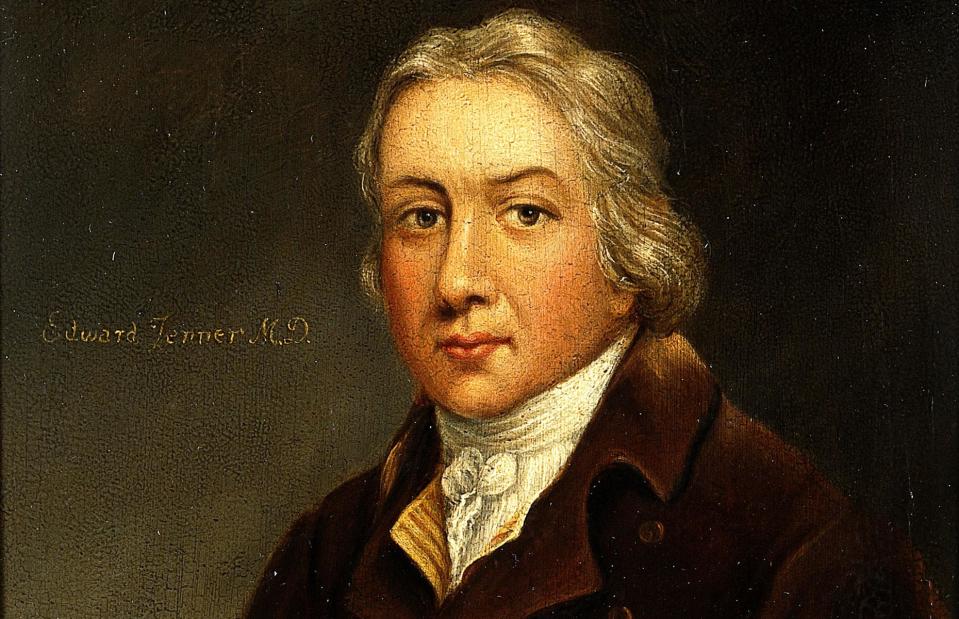
Pictorial Press Ltd/Alamy Stock Photo
In 1796 English country doctor Edward Jenner made a sensational medical breakthrough when he inoculated an eight-year-old boy with cowpox to protect against the far more deadly smallpox after noticing milkmaids, who were routinely exposed to the more benign bovine pathogen, seemed immune to the devastating human disease.
The experiment was an unmitigated success. Jenner coined the term vaccine from the Latin word "vacca", meaning cow, and published his findings in 1798.
Vaccines
![<p>Library of Congress, Prints & Photographs Division/Wikimedia Commons [Public domain]</p>](https://s.yimg.com/ny/api/res/1.2/jcE_OmiVvGiM020Habem2g--/YXBwaWQ9aGlnaGxhbmRlcjt3PTk2MDtoPTYxOQ--/https://media.zenfs.com/en/lovemoney_uk_264/74a89f11c91197c1a0e023cc9433b5bb)
Library of Congress, Prints & Photographs Division/Wikimedia Commons [Public domain]
Instead of being lauded for his discovery, Jenner was lampooned, particularly by religious leaders, who were horrified the physician was going against the will of God and using pus from diseased animals to inoculate people.
The press also poured scorn on Jenner, as you can see from this satirical cartoon by James Gillray, which shows vaccinated individuals growing grotesque cow heads. Thankfully, the disdain for Jenner's discovery dissipated, and vaccination eventually became commonplace.
Steam locomotive
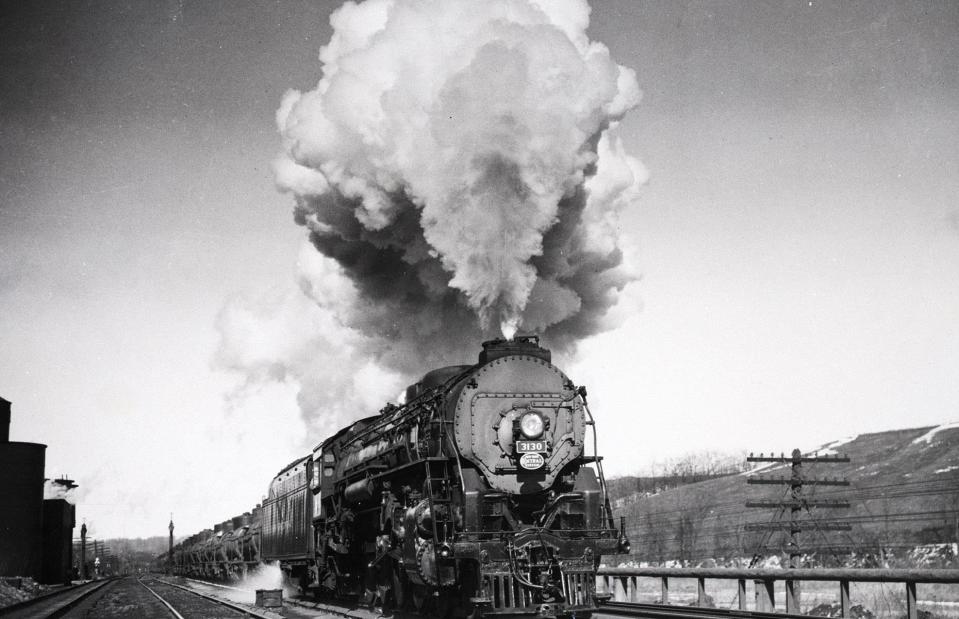
Bettmann/Getty Images
The arrival of steam-powered trains in the early 19th century hastened the pace of the industrial revolution. A symbol of the rapid social and economic transformation taking hold in society at the time, steam locomotives were a major technological advancement that revolutionised transport and communication.
But not everyone was convinced...
Steam locomotive
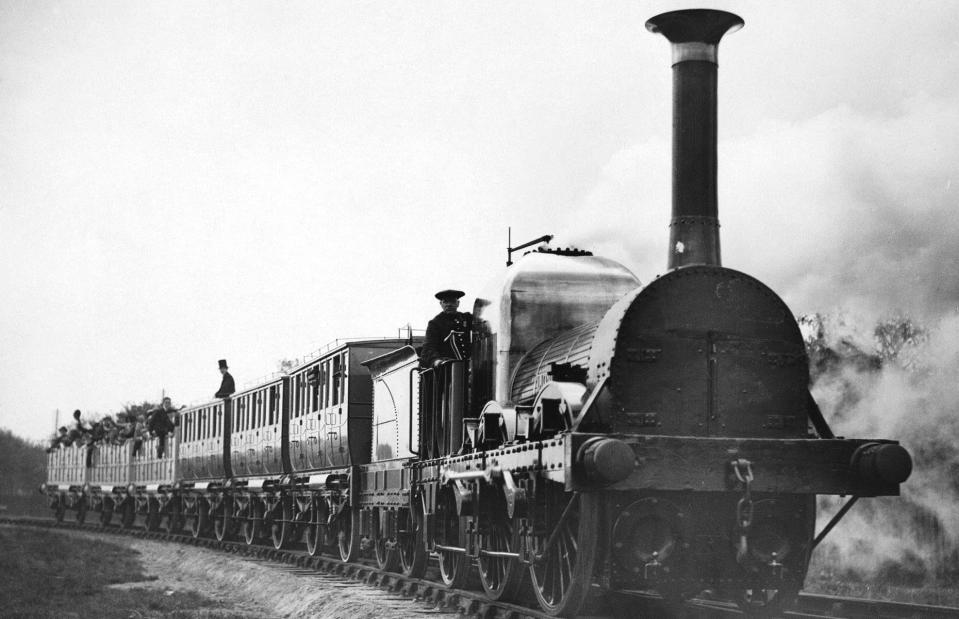
Hulton-Deutsch Collection/CORBIS/Corbis via Getty Images
The speed at which locomotives travelled was the biggest sticking point for many. At the time, snail-paced horse-drawn carriages and canal boats were the primary modes of long-distance transport, so the idea of travelling at 30mph or more was mind-boggling for many.
A major concern was that the human body simply couldn't withstand the velocity and possibly melt. According to cultural anthropologist Genevieve Bell, detractors at the time firmly believed “that women’s bodies were not designed to go at 50 miles an hour”.
Telephone
![<p>Gilbert H. Grosvenor Collection, Prints and Photographs Division, Library of Congress/Wikimedia Commons [Public domain]</p>](https://s.yimg.com/ny/api/res/1.2/gFga91YlZR5TXRTqZj3jnA--/YXBwaWQ9aGlnaGxhbmRlcjt3PTk2MDtoPTYxOQ--/https://media.zenfs.com/en/lovemoney_uk_264/a88c07ec28cd51fb4d7cdbebb808f45a)
Gilbert H. Grosvenor Collection, Prints and Photographs Division, Library of Congress/Wikimedia Commons [Public domain]
The father of the telephone, Alexander Graham Bell was awarded the first patent for the device in 1876 and is credited with creating the first practical incarnation of the trailblazing technology. However, few saw its tremendous potential.
After Bell tried to sell his telecoms business to Western Union, its president, William Orton, famously exclaimed: “what use could this company make of an electrical toy?”
Telephone
![<p>Archive of the Marconi Company Ltd/Wikimedia Commons [Public domain]</p>](https://s.yimg.com/ny/api/res/1.2/SdPTiU0JBUysNoAJzZ5PbA--/YXBwaWQ9aGlnaGxhbmRlcjt3PTk2MDtoPTYxOQ--/https://media.zenfs.com/en/lovemoney_uk_264/5e4c1571345ef1b97c28730a599fd8e4)
Archive of the Marconi Company Ltd/Wikimedia Commons [Public domain]
People even thought an American mayor was being overly optimistic about the future of the telephone when he predicted that “one day, there will be one in every city”. The reception was similarly cool in the UK.
Sir William Preece, the chief engineer of the British Post Office (pictured), was convinced the technology would never go mainstream in England: “the Americans have need of the telephone, but we do not. We have plenty of messenger boys”, he's quoted as saying.
Electric light bulb
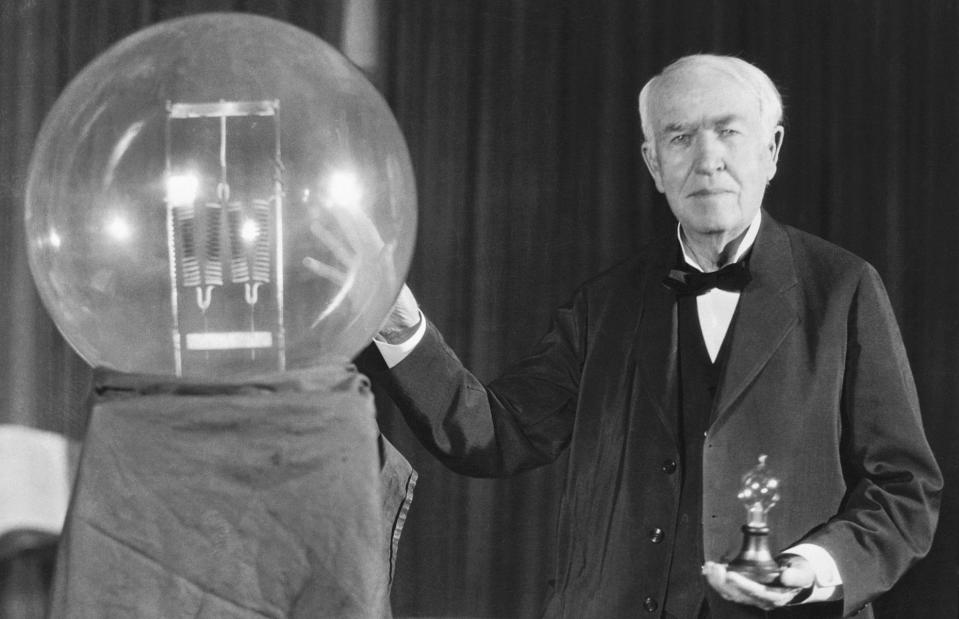
Bettmann/Getty
Thomas Edison patented the world's first commercially viable electric light bulb in 1879. Despite its ingenuity, the technology had more than its fair share of influential critics, most notably Professor Henry Morton of the Stevens Institute of Technology, who slammed the invention, calling it "a conspicuous failure trumpeted as a wonderful success".
He even went so far as to brand it a "fraud upon the public".
Electric light bulb
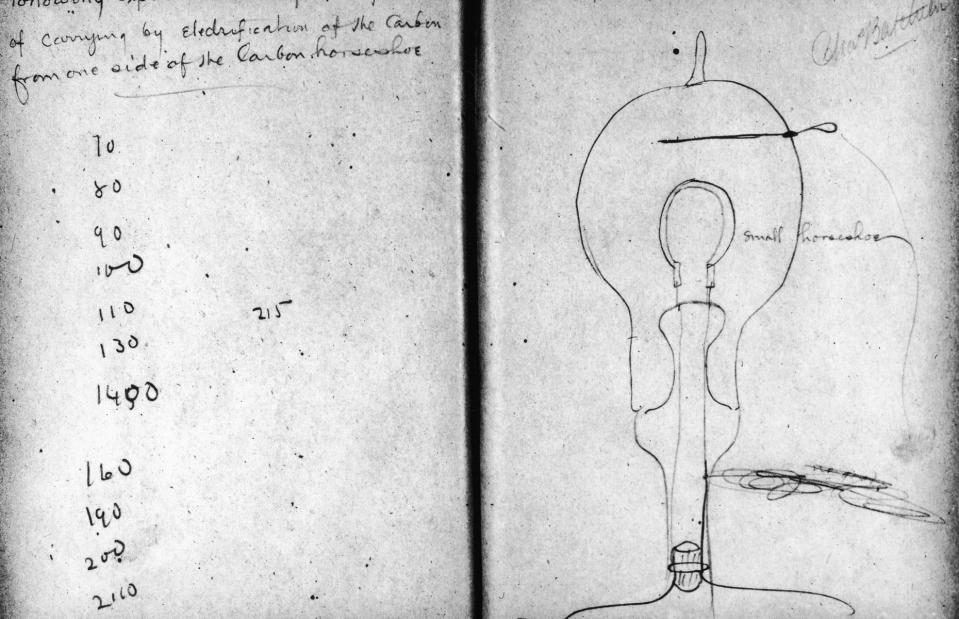
Fotosearch/Getty Images
As was the case with the telephone, experts in the UK were even more contemptuous of Edison's innovation.
A British parliamentary committee snootily concluded that the American invention was “good enough for our transatlantic friends... but unworthy of the attention of practical or scientific men”, while Sir William Preece, who was clearly no stranger to bad predictions, called it an “absolute ignis fatuus ['foolish fire']” – basically a will-o'-the-wisp or false hope.
Refrigerator

Susie Kearley/Alamy Stock Photo
It might be one of the world's most transformative inventions when it comes to our diets, but the refrigerator was initially met with a frosty reception. Although ice houses such as the one pictured were relatively popular with the upper classes, everyday people relied on techniques such as pickling to preserve their food.
When electric refrigerators were first brought to market in the early 1900s, they were dismissed as noisy, expensive and difficult to maintain.
Refrigerator
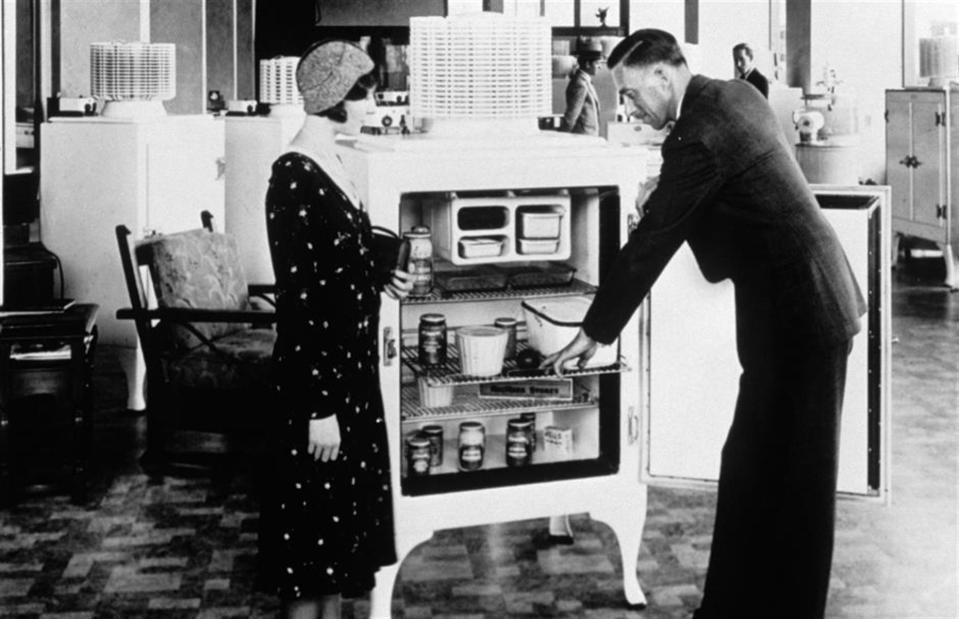
Camerique/Alamy
To make matters worse, ice was America's second-biggest export after cotton at the time, and critics widely slammed the refrigerator as they believed it would harm the domestic ice industry.
However, following a series of developments from the likes of General Electric, refrigerators became much more practical for home use. Consumers began to "warm up" to the world of electric refrigeration and never looked back.
Daylight saving time (DST)
![<p>Royal Society of New Zealand/Wikimedia Commons [Public domain]</p>](https://s.yimg.com/ny/api/res/1.2/9dGvjuQ9luAWyaMQtq4srQ--/YXBwaWQ9aGlnaGxhbmRlcjt3PTk2MDtoPTYxOQ--/https://media.zenfs.com/en/lovemoney_uk_264/3a2516f59264c57f3fbcb70fc21a6e7f)
Royal Society of New Zealand/Wikimedia Commons [Public domain]
Nowadays, most countries move their clocks forward an hour in the spring and back every autumn to make the most of natural daylight. The practice was first suggested in 1895 by British-born New Zealand scientist George Vernon Hudson in a paper submitted to the Wellington Philosophical Society.
Hudson's suggestion was lambasted by his peers.
Daylight saving time (DST)
![<p>Rutrus /Wikimedia Commons [Public domain]</p>](https://s.yimg.com/ny/api/res/1.2/8_iCn02ToWWYA_W4FAFflQ--/YXBwaWQ9aGlnaGxhbmRlcjt3PTk2MDtoPTYxOQ--/https://media.zenfs.com/en/lovemoney_uk_264/4fb62f6d95cf9090fa511b0bc1bfa486)
Rutrus /Wikimedia Commons [Public domain]
Indeed, the very notion of playing around with time was considered preposterous. One member complained that it was “out of the question to think of altering a system that had been in use for thousands of years”, while another rubbished the concept as unscientific and impractical.
Hudson had the last laugh when DST was adopted in Ontario, Canada in 1908. Countries around the world soon followed suit.
Bicycle
![<p>Popular Science/Wikimedia Commons [Public domain]</p>](https://s.yimg.com/ny/api/res/1.2/K31ATB7glcHzZ4N0qf9jUg--/YXBwaWQ9aGlnaGxhbmRlcjt3PTk2MDtoPTYxOQ--/https://media.zenfs.com/en/lovemoney_uk_264/e142096c66976cbdff87fffd175b6e2f)
Popular Science/Wikimedia Commons [Public domain]
The earliest bicycle was invented in Germany in the 1810s but the pedal-driven vehicle didn't enter the mainstream until the 1890s with the introduction of the so-called safety bike.
Regarded at the time as a frivolous pastime for the aspirational middle and decadent upper classes, the innovation was mercilessly panned.
Bicycle
![<p>Punch magazine/Wikimedia Commons [Public domain]</p>](https://s.yimg.com/ny/api/res/1.2/dmiyueBG0wPjJt82Cg8M7Q--/YXBwaWQ9aGlnaGxhbmRlcjt3PTk2MDtoPTYxOQ--/https://media.zenfs.com/en/lovemoney_uk_264/3985ef89ab1aeeef8ed3336b5fd1cfef)
Punch magazine/Wikimedia Commons [Public domain]
Female cyclists in particular were the objects of ridicule, as you can see from this Punch magazine cartoon from 1898, and journalists were quick to dismiss the bicycle as a silly, short-lived craze. In 1902 The Washington Post declared the activity a passing fancy, while the New York Sun confidently proclaimed the death of the pastime in 1906.
Automobile
![<p>La Vie au Grand Air/Wikimedia Commons [Public domain]</p>](https://s.yimg.com/ny/api/res/1.2/.v3Abz.Snr3wTrHIeD97Nw--/YXBwaWQ9aGlnaGxhbmRlcjt3PTk2MDtoPTYxOQ--/https://media.zenfs.com/en/lovemoney_uk_264/9fe096843247100bc110f71561837cc3)
La Vie au Grand Air/Wikimedia Commons [Public domain]
Cynics rushed to disparage the automobile too. Literary Digest weighed in on the technology in 1899, concluding that “the ordinary 'horseless carriage' is at present a luxury for the wealthy; and although its price will probably fall in the future, it will never, of course, come into as common use as the bicycle”.
Automobile
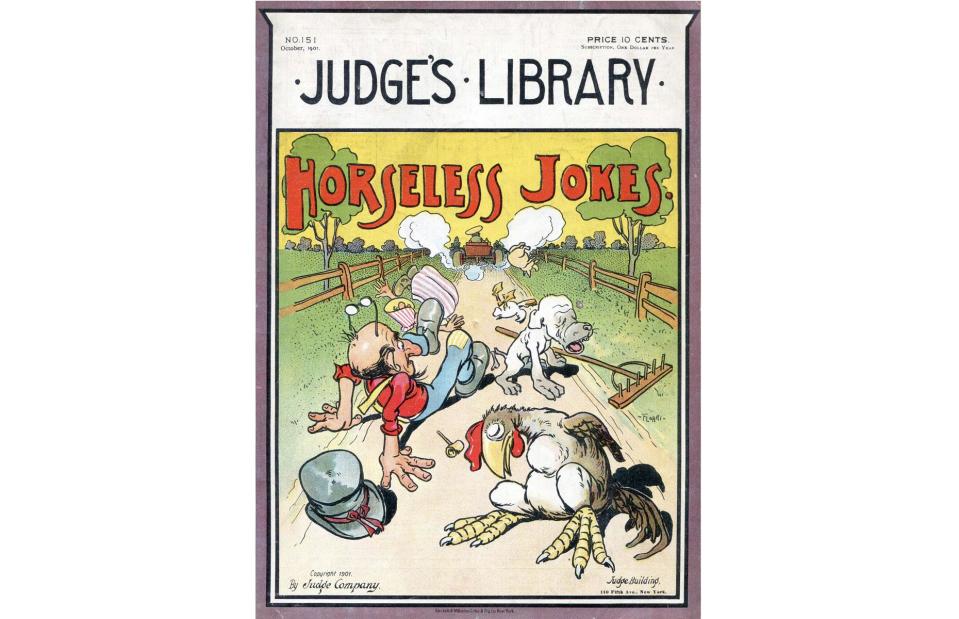
Transcendental Graphics/Getty Images
The New York Times agreed, stating in 1902 that the price of automobiles “will never be sufficiently low to make them as widely popular as were bicycles”.
The following year, the President of the Michigan Savings Bank warned Henry Ford's lawyer, Horace Rackham, not to invest in the Ford Motor Company on the grounds that “the horse is here to stay, but the automobile is only a novelty – a fad”.
Sound film
![<p>Warner Bros./Wikimedia Commons [Public domain]</p>](https://s.yimg.com/ny/api/res/1.2/i0p0lkL0RPWjPsMtVLIJ3Q--/YXBwaWQ9aGlnaGxhbmRlcjt3PTk2MDtoPTYxOQ--/https://media.zenfs.com/en/lovemoney_uk_264/04b8b4ba7818d533241925e03958aad2)
Warner Bros./Wikimedia Commons [Public domain]
The first "talkies" were actually produced by pioneering French director Alice Guy-Blaché in the early 1900s. But movies incorporating synchronised dialogue didn't take off until 1927 with the release of Hollywood blockbuster The Jazz Singer, which spelled the end of the silent movie era.
That said, despite the film's huge success, early sound movies had plenty of powerful detractors.
Sound film
![<p>Hollywood Magazine/Wikimedia Commons [Public domain]</p>](https://s.yimg.com/ny/api/res/1.2/SwwTG9bi9gUYNYtal7XKIw--/YXBwaWQ9aGlnaGxhbmRlcjt3PTk2MDtoPTYxOQ--/https://media.zenfs.com/en/lovemoney_uk_264/ae6229bc89597046c2ef740b42289b9f)
Hollywood Magazine/Wikimedia Commons [Public domain]
United Artists president Joseph Schenck surmised in 1928 that “talking doesn't belong in pictures”, while across the pond British film studio boss John Maxwell dismissed the talkie as “a costly fad”.
Hollywood stars were equally disdainful of the newfangled technology. Actress Mary Astor wrote in the 1960s that many artists of the era considered The Jazz Singer a box-office gimmick, believing sound movies would “drive audiences from the theaters”.
Television
![<p>Library of Congress's Prints and Photographs division/Wikimedia Commons Television [Public domain]</p>](https://s.yimg.com/ny/api/res/1.2/.7Z9gMeXMV_FiTG0hWR42w--/YXBwaWQ9aGlnaGxhbmRlcjt3PTk2MDtoPTYxOQ--/https://media.zenfs.com/en/lovemoney_uk_264/17b96a323d4d95c05ffe65eac6b8bd11)
Library of Congress's Prints and Photographs division/Wikimedia Commons Television [Public domain]
Scottish inventor John Logie Baird introduced the TV to the world in 1926, attracting sceptics from the start. When Baird turned up at UK newspaper the Daily Express' offices to showcase his creation, the newspaper's editor ordered a staff member to “go down to reception and get rid of the lunatic... He says he's got a machine for seeing by wireless. Watch him – he may have a razor on him".
That same year radio pioneer Lee DeForest judged TV to be “commercially and financially... an impossibility”.
Television
![<p>Radio Corporation of America/Wikimedia Commons [Public domain]</p>](https://s.yimg.com/ny/api/res/1.2/4Su8VbCAM6KT_yXkgpEBJQ--/YXBwaWQ9aGlnaGxhbmRlcjt3PTk2MDtoPTYxOQ--/https://media.zenfs.com/en/lovemoney_uk_264/28f9ce6b102e26580bef63af47b02988)
Radio Corporation of America/Wikimedia Commons [Public domain]
In 1939 the New York Times stressed that "TV will never be a serious competitor for radio because people must sit and keep their eyes glued on a screen; the average American family hasn't time for it”.
20th Century Fox boss Darryl Zanuck claimed in 1946 that “TV won't be able to hold on to any market it captures after the first six months. People will soon get tired of staring at a plywood box every night." And in 1948 BBC radio exec Mary Somerville called the technology “a flash in the pan".
Tupperware
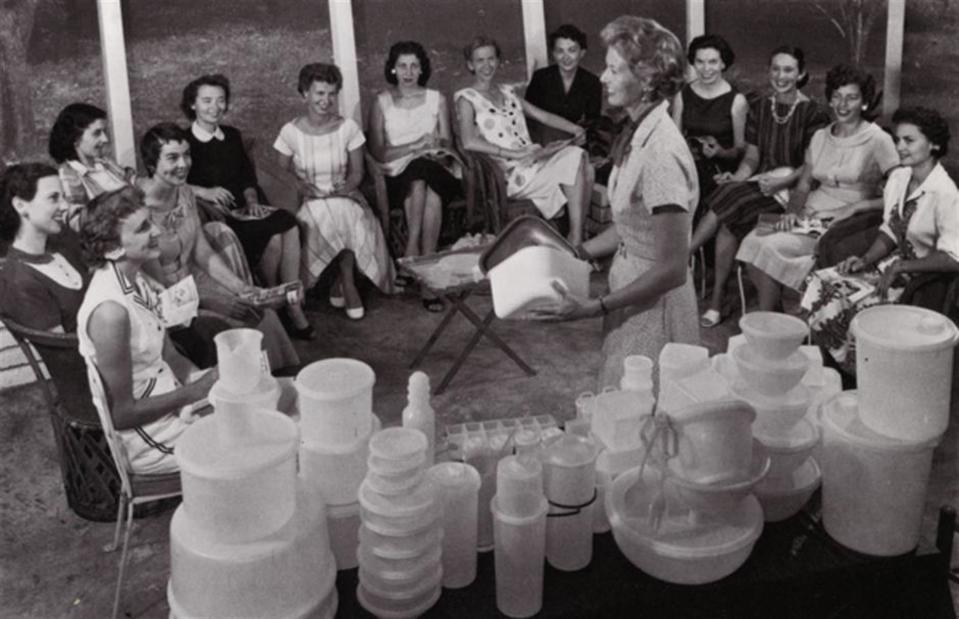
State Archives of Florida/Florida Memory /Alamy Stock Photo
A chemist named Earl S. Tupper developed one of the world's most iconic products – and it all started with a paint can. He was working in a plastics factory when he came up with the idea of designing food storage containers with air and liquid-tight seals, such as those on paint cans.
This was shortly after the Great Depression, and Tupper wanted to help families reduce food waste. There was just one problem: the containers were so effective that consumers struggled to open them, often needing to be shown how...
Tupperware

Anton Dos Ventos/Alamy Stock Photo
Deciding to embrace the personal touch, the company began to sell directly to consumers through Tupperware parties, an innovative marketing scheme whereby self-employed salespeople sold Tupperware in people's homes. The tactic paid off and Tupperware became hugely successful.
Mobile phone
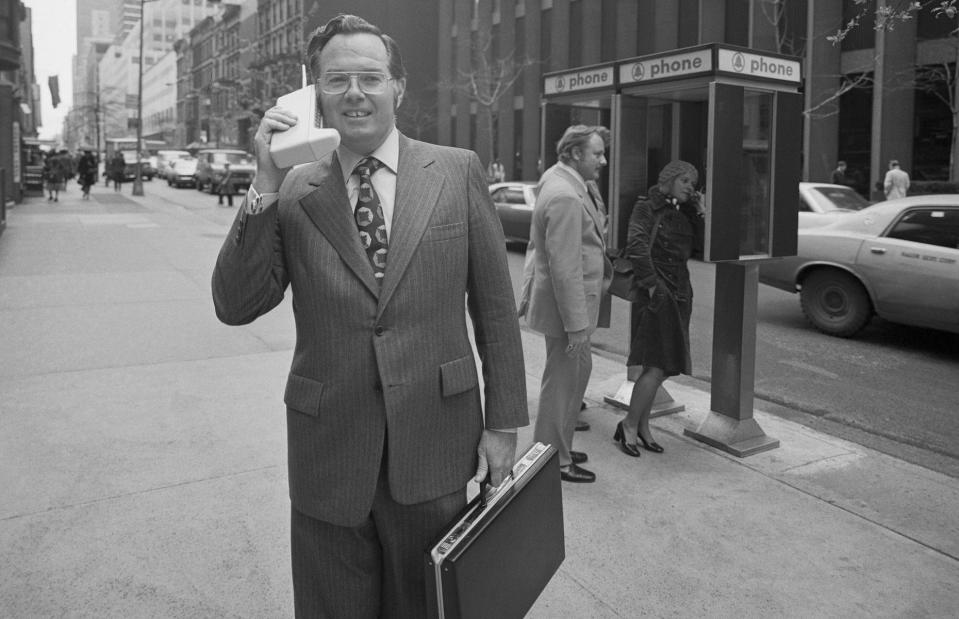
Bettmann/Getty Images
Back in the early 1980s, mobile phones were heavy brick-like devices. Expensive to purchase and use, they were the sole preserve of rich business people. No wonder the future of the technology appeared bleak to some experts.
A 1980 report by McKinsey for AT&T predicted that the mobile phone would be a niche device with just 900,000 users in the US by 2000. In reality, the total number of users that year hit 108 million.
Mobile phone
![<p>Rico Shen/Wikimedia Commons [CC BY-SA 3.0 DEED]</p>](https://s.yimg.com/ny/api/res/1.2/DsY50n5.98akVR4OEwoZpA--/YXBwaWQ9aGlnaGxhbmRlcjt3PTk2MDtoPTYxOQ--/https://media.zenfs.com/en/lovemoney_uk_264/5ccba38b240a6d32c1af034640885d22)
Rico Shen/Wikimedia Commons [CC BY-SA 3.0 DEED]
In 1981 telecoms consultant Jan David Jubon was unconvinced the technology had any traction: “But who, today, will say I'm going to ditch the wires in my house and carry the phone around?”
Even Martin Cooper (pictured), the engineer who led the team that built the first mobile phone, was himself pretty lukewarm about the technology, claiming: “Cellular phones will absolutely not replace local wire systems. Even if you project it beyond our lifetimes, it won't be cheap enough".
Laptop
![<p>Bilby/Wikimedia Commons [CC BY 3.0 DEED]</p>](https://s.yimg.com/ny/api/res/1.2/.osTYuI5tjS04HleMAPqAQ--/YXBwaWQ9aGlnaGxhbmRlcjt3PTk2MDtoPTYxOQ--/https://media.zenfs.com/en/lovemoney_uk_264/6424f3b7eb1da8eb103d7b5a7a6aa945)
Bilby/Wikimedia Commons [CC BY 3.0 DEED]
A slew of historians consider the Osborne 1 (pictured), which was released in 1981, the first truly portable computer. Hot on its heels was the Compaq Portable, the first PC-compatible laptop, which was launched in 1983.
While super-innovative, early laptops were cumbersome, limited in what they could do and outrageously expensive to boot. Some retailed for the equivalent of $17,000 (£13k) in today's money.
Laptop
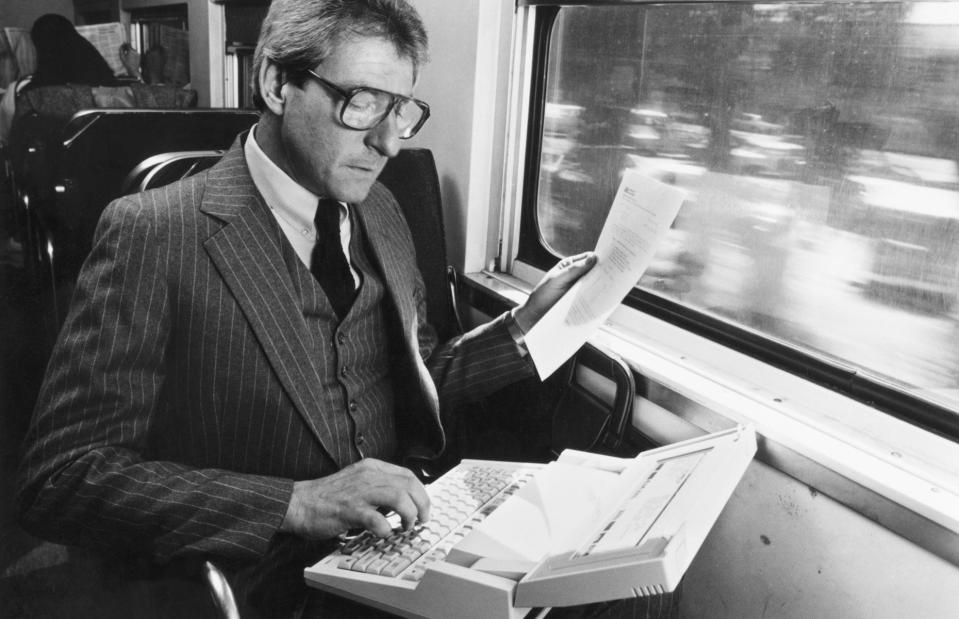
Bettmann/Getty Images
Given these drawbacks it comes as no surprise that some experts dismissed the laptop as a fad. For instance New York Times tech writer Erik Sandberg-Diment penned an article in 1985 deriding the innovation and predicting its sad demise.
The journalist believed the average user would never want to lug around a laptop and compute on the move and thought the gizmo had little chance of catching on widely.
![<p>ARPANET/Wikimedia Commons [Public domain]</p>](https://s.yimg.com/ny/api/res/1.2/hwkairqxUoGMvClzP4rzxQ--/YXBwaWQ9aGlnaGxhbmRlcjt3PTk2MDtoPTYxOQ--/https://media.zenfs.com/en/lovemoney_uk_264/fd68fdb190b89f7f0db53819cacd2bc3)
ARPANET/Wikimedia Commons [Public domain]
Electronic mail was invented way back in 1965 at the Massachusetts Institute of Technology (MIT) and the first message from computer to computer (the two devices are pictured here) was sent in 1969 via the US Department of Defense's Advanced Research Projects Agency Network (ARPANET).
Interestingly, the agency initially dismissed the technology, stating that sending messages between users “was not an important motivation for a network of scientific computers”.

Jonathan Elderfield/Getty
Even during the mid 1990s when email was going mainstream naysayers were dismissive of the technology. In 1994, UK government officials mulling over whether to set up an email account for the then-prime minister John Major claimed that the new method of exchanging messages would likely never catch on.
Microwave
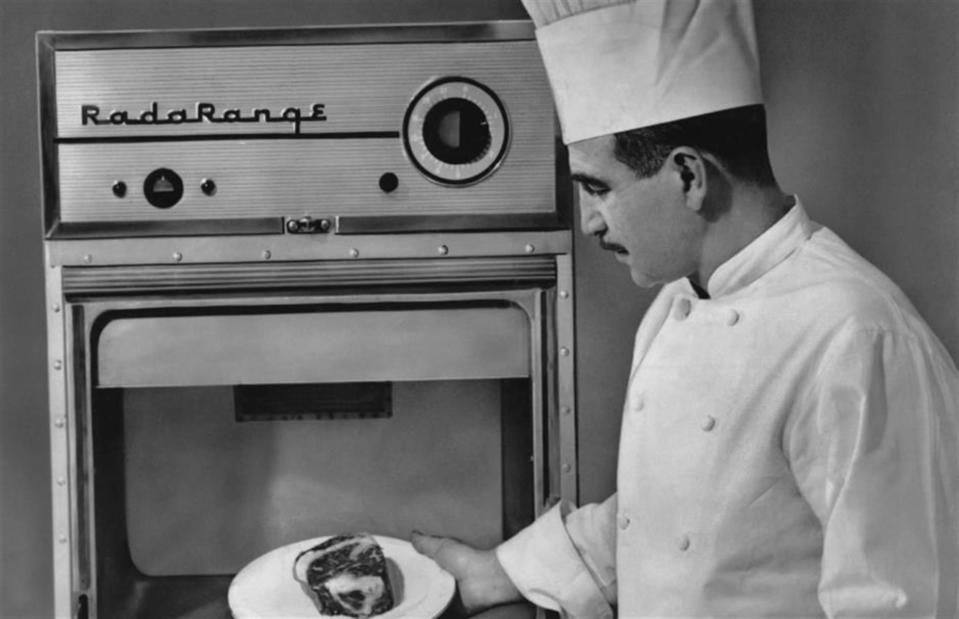
Pictorial Parade/Archive Photos/Getty Images
As America geared up for the Cold War, the military asked scientist Peter Spencer to develop magnetron technology that could increase the power of radar sets, which were designed to identify airborne Soviet threats. While he was working on the project, Spencer realised the magnetron was emitting microwaves that were warm enough to melt a chocolate bar he had in his pocket.
After further experimentation, in 1947 he released the "RadaRange": a commercial microwave oven that used electromagnetic technology to heat and cook food. But at over 750lb (340kg) and more than six feet (1.82m) tall, the RadaRange was hardly suitable for domestic use.
Microwave

BrazilPhotos/Alamy
It was another 20 years before microwave ovens became the small, countertop utilities we know today, but they weren't widely affordable until the 1970s. By 1997, over 90% of US homes contained a microwave, according to the US Bureau of Labor Statistics, up from a measly 1% in 1971.
Internet
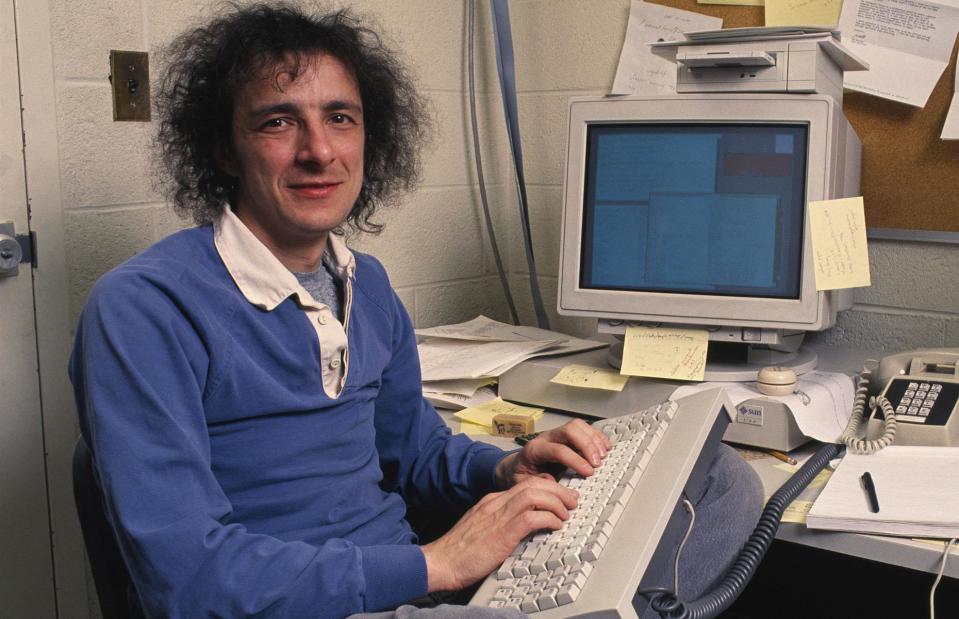
Ira Wyman/Sygma via Getty Images
Back in the mid-1990s, a number of experts were less than keen on the internet, which they viewed as a nerdy fad that would end up going nowhere.
By way of example, a now-infamous article penned by scientist Clifford Stoll (pictured) in 1995 for Newsweek entitled "The Internet? Bah!" slammed the innovation and predicted it would crash and burn.
Internet
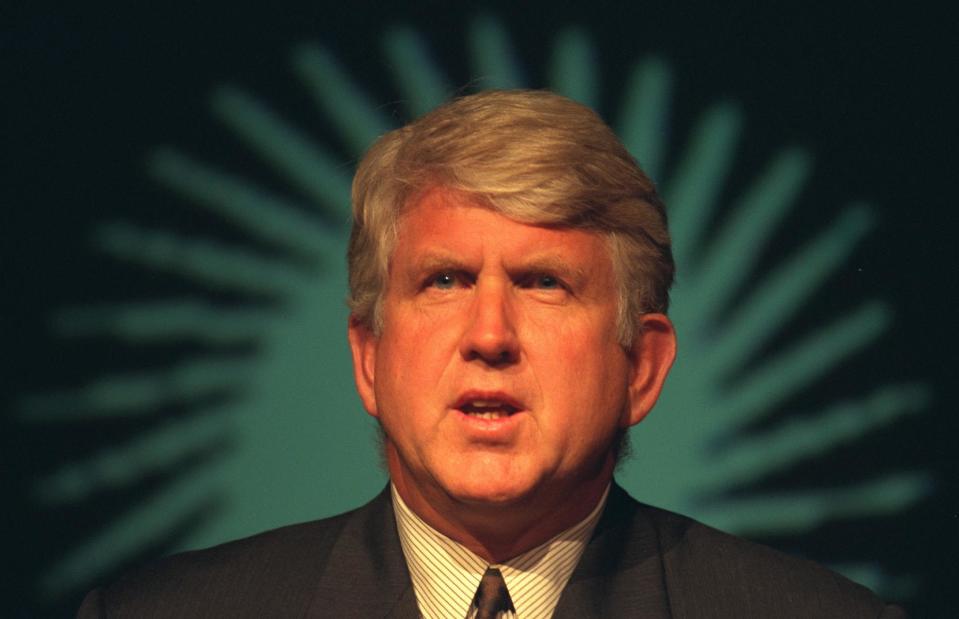
Alain Nogues/Sygma/Sygma via Getty Images
Also in 1995, Ethernet inventor Bob Metcalfe (pictured) wrote in an opinion piece for InfoWorld magazine that “the internet will soon go spectacularly supernova and in 1996 catastrophically collapse”.
Metcalfe vowed to eat his words if he was wrong and did just that at the World Wide Web Conference in 1997. He blended a copy of the article with some water and wasted no time downing the concoction.
Now discover the famous inventions their creators regretted

 Yahoo Finance
Yahoo Finance 